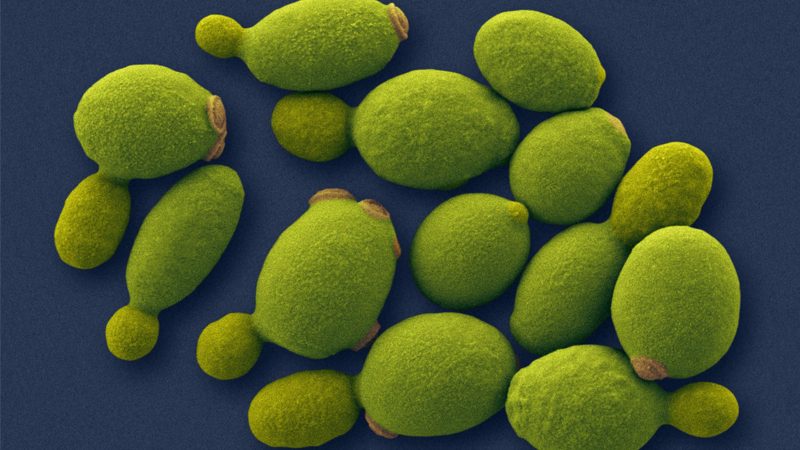Yeast cells are important workhorses for the “green” production of various chemicals and proteins. In many cases the biotechnological industry favours the secretive production of their target compounds, because of lower costs for purification and less complicated downstream processing. But the way from an intracellularly produced protein through the cellular secretion machinery to the outside of the cell is very long and hides numerous obstacles. Researchers all over the world are looking for methods to overcome these hurdles – so do acib researchers.
The most important yeast species acting as a cell factory are for example Saccharomyces cerevisiae, Pichia pastoris, Yarrowia lipolytica or Hansenula polymorpha. Pichia pastoris, a budding yeast, evolved to a favoured organism for the secretive production because of its limited number of natural proteins that are anyway exported. Thus, the secreted target protein is available in the medium in a quite pure condition and the subsequent downstream processing (purification) is significantly facilitated.
So far so good – but there is a snag: Depending on the target product the secretion might face a couple of hurdles, which often end up in the same scenario: low product yields or even protein degradation. In order to overcome the particular problems (and to keep the frustration level low), researchers are busy looking into the basic secretion mechanisms of Pichia since several years.
How does protein secretion work in Pichia?
The usual way of secretion starts with correct protein folding at the endoplasmic reticulum (ER). Each protein carries a signal for its final destination – proteins that are recognized for secretion, are packed in vesicles at the Golgi and are transported to the cell membrane. Finally, vesicles fuse with the membrane and the proteins are released into the medium.
Quite recently, researchers at acib and BOKU Vienna found out that the final release of a well secreted model target protein (human serum albumin) is realized at the bud. Further investigations showed the same for other proteins such as Epx1, which is a native secreted protein or the antibody light chain, which is hard to be secreted. Nevertheless, there was still product found in the cells, mainly in the ER but also in the vacuole, the main degradative organelle of the cell.
A way to outwit the yeast machinery?
Despite of correct folding of secreted proteins, mistargeting of recombinant proteins to the vacuole was noticed. One of the protein complexes responsible for vacuolar transport is the so called CORVET complex, which consists of 6 vacuole protein sorting (Vps) proteins. Former studies in Saccharomyces showed that dysfunction in vacuolar protein sorting (especially proteins of the so called CORVET complex) leads to enhanced secretion levels. Recent investigations of acib and BOKU Vienna focused on Pichia pastoris, where mutants of VPS did not result in an improved secretion because of enhanced proteolytic activity in the medium. This is caused by mistargeting of vacuolar proteases as a consequence of the knock-out of VPS genes. In a further approach, they combined the VPS mutants with the genetic inactivation of these special vacuolar proteases, which significantly improved the output.
The ways of secretion in Pichia pastoris still keep complex and demand for trial and error approaches – however – these recent findings are one step further to identify and circumvent the main stumbling blocks.
V Puxbaum, B Gasser, D Mattanovich: The bud tip is the cellular hot spot of protein secretion in yeasts. 2016 Appl Microbiol Biotechnol 100 (18), DOI 10.1007/s00253-016-7674-6
L Marsalek, C Gruber, F Altmann, M Aleschko, D Mattanovich, B Gasser, V Puxbaum: Disruption of genes involved in CORVET complex leads to enhanced secretion of heterologous carboxylesterase only in protease deficient Pichia pastoris. 2017 Biotech J 12, DOI 10.1002/biot.201600584
Picture credits: Wikimedia commons (Kelly Servick)
